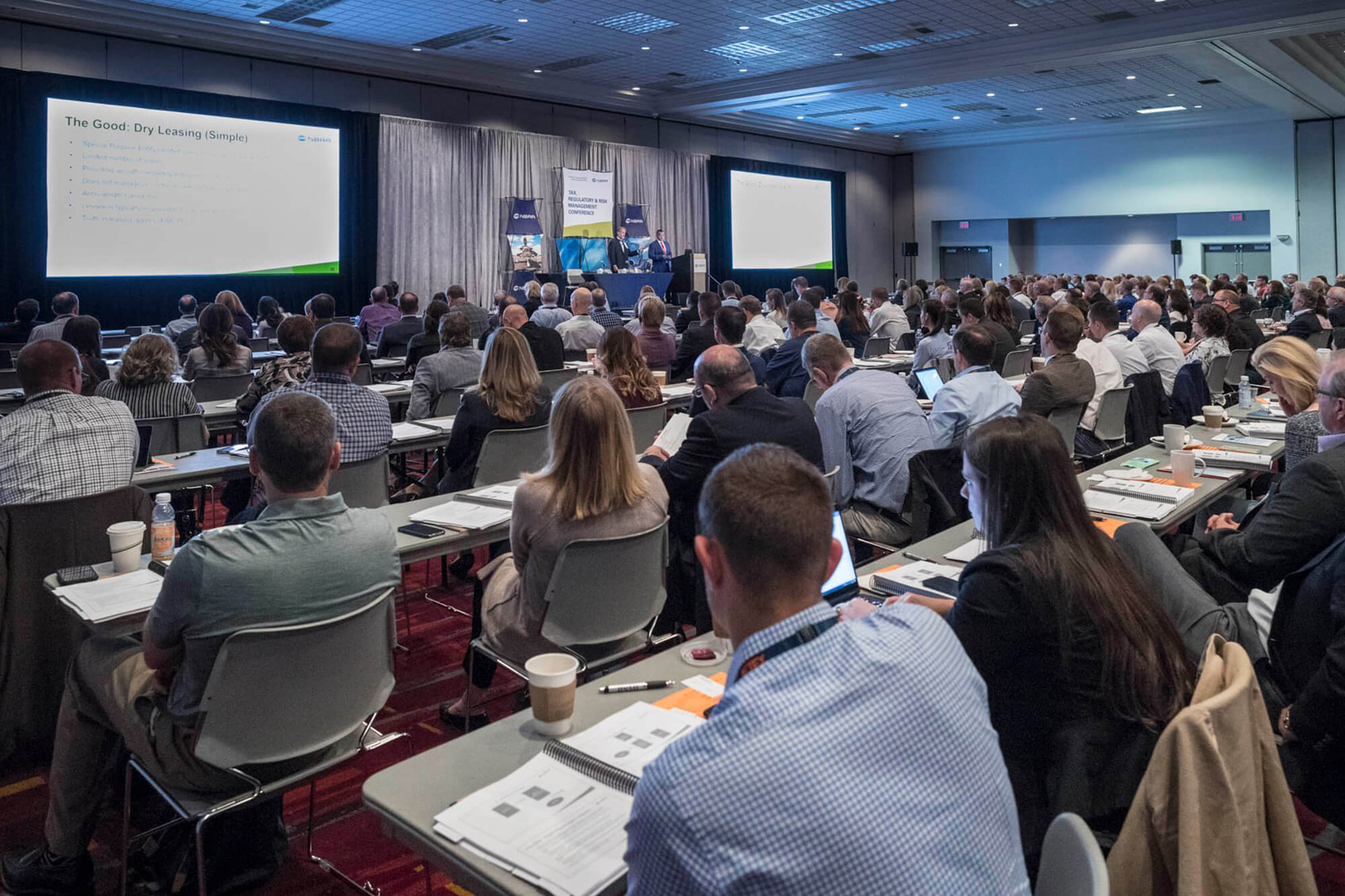NBAA-BACE Tax Conference Examines Balancing Act Between IRS, FAA Obligations

Oct. 20, 2019
More than 300 attendees filled the NBAA Tax, Regulatory & Risk Management Conference, held prior the opening of the 2019 NBAA Business Aviation Convention & Exhibition (NBAA-BACE) in Las Vegas, NV, seeking advice for navigating the precarious, and sometimes contradictory, balance between a business aircraft operator’s tax obligations and its responsibility to adhere to FAA regulations.
“If you go in and start looking at airplanes and set them up just focusing on tax [implications], you’re almost invariably going to violate the Federal Aviation Regulations,” said presenter David Norton, partner and head of the aviation practice at Shackelford, Bowen, McKinley & Norton, LLP. “In fact, in a couple places they’re kind of diametrically opposed.”
Taking place Oct. 21-22, the conference began with a look at one of the most fundamental and persistent questions for many business aviation operations: the difference between private Part 91 operations, and those under Part 135 involving commercial operations for compensation or hire.
Further muddying the tax liability and regulatory waters is Part 91F, which allows limited commercial aircraft operation for flights conducted by an airplane owner for personal transportation, or when carrying executives, employees or guests of an affiliated company within the scope of carrying out its business. While it’s a popular alternative for business aviation operators, it also carries many potential areas to run afoul of IRS and FAA regulations.
“Whenever you attach compensation, you will be held to a heightened standard of regulatory scrutiny and will have to comply with a lot more regulations,” said David Hernandez, chair of the NBAA Tax Committee. “There’s very, very limited exceptions to the compensation rules that you can operate in a Part 91 [flight department.]”
One of the hottest topics among business aviation operators is how to fully benefit from incentives like bonus depreciation while complying with IRS regulations – and avoiding audits. For example, operators must prove the aircraft is at least partly used for a qualified business purpose to qualify for depreciation incentives and maintain accurate logs of all personnel traveling on the aircraft, or the IRS could rule such flights “disallowed” for tax depreciation purposes.
“If you get exposed on it and you do not have records – or can’t recreate your records – the IRS can take a position that all uses are disallowed uses, and you will have to prove otherwise,” said Keith Swirsky, president of GKW Law, P.C. and co-presenter of the “Key Federal Tax Issues and Audits” session. “You should maintain obviously a record of all your expenses – departure airport, destination airport, flight hours, statue miles and the name of each passenger.”
Owners may realize depreciation benefits even from their own personal use of the aircraft, provided those trips aren’t for entertainment or recreational purposes, as well as claiming passive and active gains and losses against the aircraft. For example, an operator may consider dry leasing their aircraft for charter operations; however, they must also be able to demonstrate they did not materially participate in such activities, which can be trickier than it seems.
“Business aircraft buyers can be a really creative bunch,” said presenter Alan Burnett with CenterPoint Aviation Law PLLC. “For sure, there are people who genuinely do meet these requirements, but unless we’re talking about a taxpayer who’s actually going into the business of aircraft leasing to make a profit, it strains credibility – and right now that credibility with auditors [is] really important.”
Other topics covered throughout the two-day conference include tax reform, international transactions, managing risk to protect a company’s reputation and the ramifications of the Supreme Court’s recent Wayfair decision – allowing a state to charge sales tax on purchases from out-of-state sellers, even if the seller doesn’t maintain a physical presence in that state – on business aviation tax planning.
Any person who attends an NBAA convention, conference, seminar or other program grants permission to NBAA, its employees and agents (collectively "NBAA") to record his or her visual/audio images, including, but not limited to, photographs, digital images, voices, sound or video recordings, audio clips, or accompanying written descriptions, and, without notifying such person, to use his or her name and such images for any purpose of NBAA, including advertisements for NBAA and its programs.
Related Articles
December 20, 2019
Did You Miss It? Thought Leaders’ Perspectives Featured in Best of 2019 NBAA TV Live
November 1, 2019
Video: What’s Holding Up Sustainable Fuel Use? NBAA-BACE Panel Explores the Question
October 24, 2019
NBAA-BACE Report – Oct. 24, 2019
October 24, 2019


 International Business Aviation Council Ltd.
International Business Aviation Council Ltd.